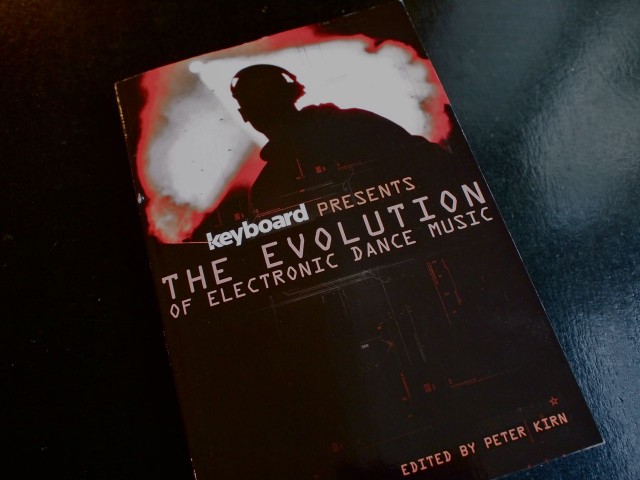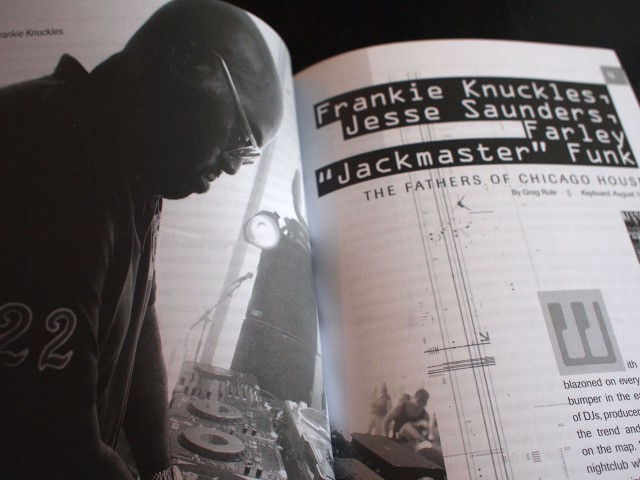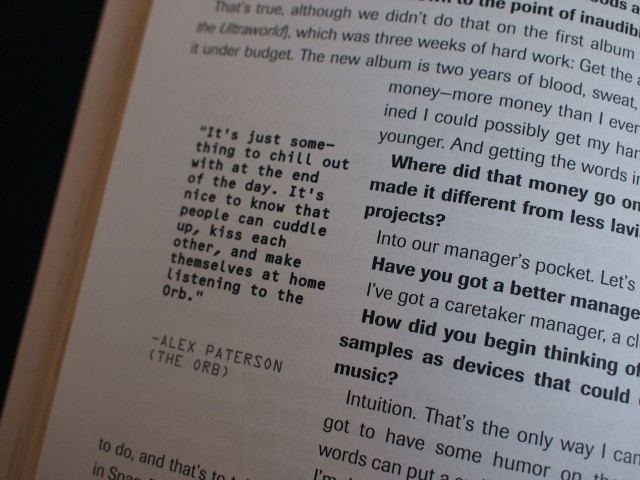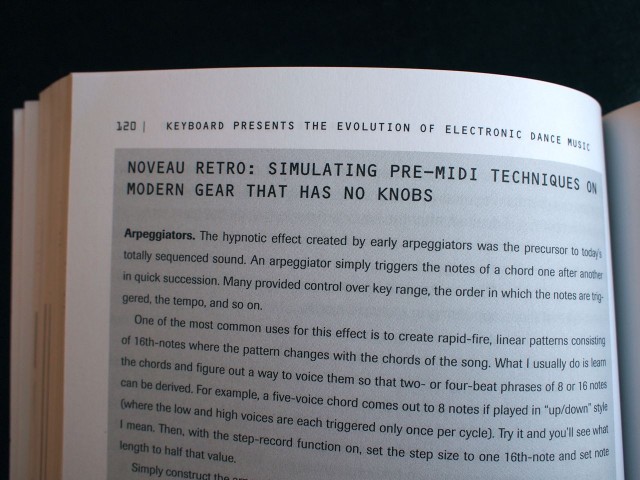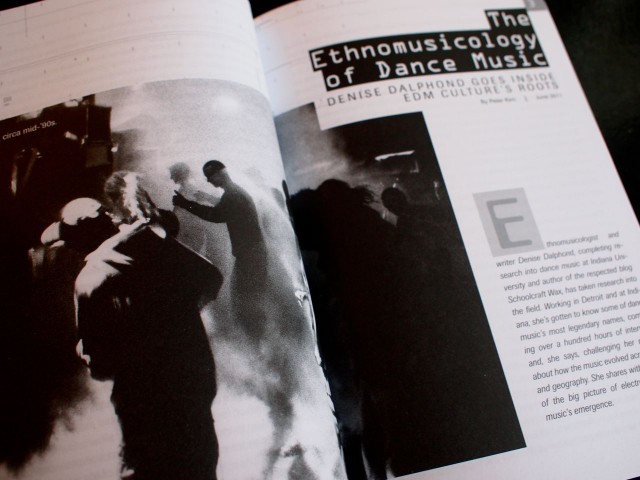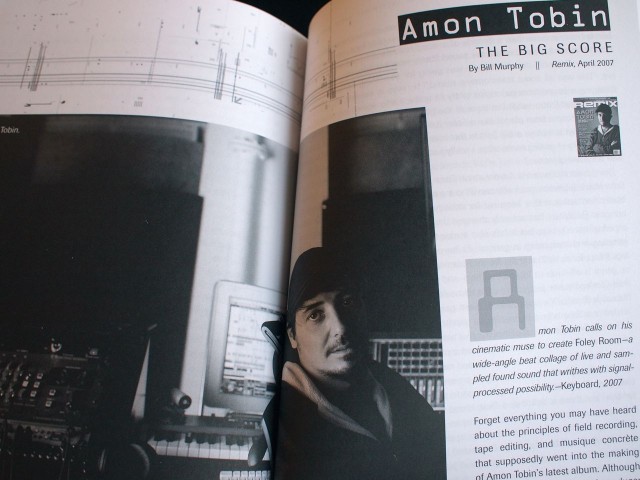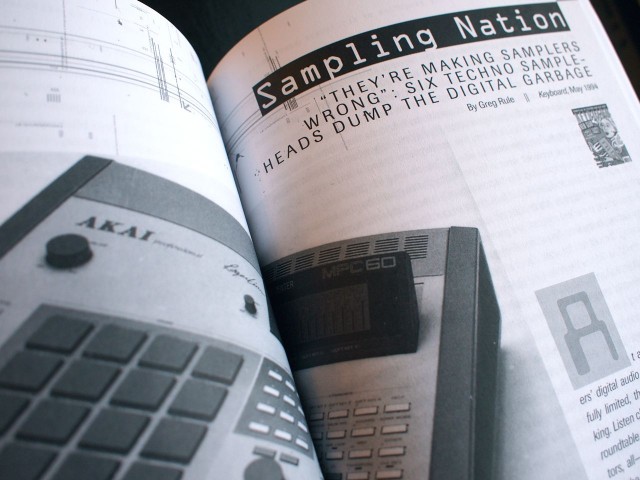I had the pleasure this year of working on a book that draws from over 30 years of coverage of Electronic Dance Music’s evolution. Collecting pages primarily from Keyboard, with additional content from Remix, we retrace the relationship of machines and music, technology and movement, in producing the sounds to which people dance.
It’s impossible to be encyclopedic in such an endeavor, but part of what I enjoyed about working on the project was getting to see through the eyes of the artists. You hear them talk in astounding detail about how they actual craft what they make. They curse their gear and long for more usable tools. They lament challenges in the scene that echo today. And they talk, musician to musician, about why they do what they do, what most personally they’re trying to express. (One advantage of being a magazine like Keyboard is that you’re not talking to a music journalist, but a fellow practitioner; you don’t have to shy away from technical details or explain to an outsider, and that comes across.)
I hope to run an excerpt here on CDM, so if there’s something you’d like to see, let us know.
I do very much want to get this out in the world and read – otherwise, I’d go get a real job — but I’m constrained by the slow trickle of print books into the channel. Stock in some places is still three weeks out; B&N as I write this says they’re in stock for immediate shipping.
The Evolution of Electronic Dance Music @ Amazon
See the Table of Contents below, plus more pictures to give you a taste.
I also have to say, I’m hugely indebted to the folks at Hal Leonard (of which Backbeat is an imprint) for allowing me free reign on this project, and making it look terrific, and to Steve Fortner and especially Lori Kennedy at Keyboard for an archival effort that was nothing short of heroic. You may imagine we’re sitting on some massive electronic collection of articles from Keyboard’s decades of publishing. We’re not. We pulled a whole bunch of this from paper, which is how I wound up sitting in a coffee shop in Toronto in the hours (literally) up to the manuscript deadline removing errant carriage returns.
Table of Contents: I imagine your first question would likely be, why [x] and not [y]? Believe me, this was my own first question. In the end, as I said, the book is not so much a timeline of EDM, or an encyclopedia. It’s a series of snapshots, chosen from my perspective to be partially representative, but also to build a story between pieces, and to find some of the richest writing in the magazine. The magazine has its own biases, but that itself tells a story; between the pages, between the lines, there’s a tale of the music and technology that I think does emerge.
And for me, finding that connection point between human and machine was especially important, so you’ll see that thread, unsurprisingly, woven into the text. Do let me know what you think if you pick up a copy.
Preface
1. Kraftwerk
“Electronic Minstrels of the Global Village”
By Jim Aikin, March 1982
2. Depeche Mode, Soft Cell, The Units, Wall of Voodoo, Japan, Our Daughters Wedding
“New Synthesizer Rock”
By Robert Doerschuk, June 1982
3. The Ethnomusicology of Dance Music
“Denise Dalphond Goes Inside EDM Culture’s Roots”
By Peter Kirn, June 2011
4. Frankie Knuckles, Jesse Saunders, Farley “Jackmaster” Funk
“The Fathers of Chicago House”
By Greg Rule, August 1997
5. Juan Atkins
“Juan Atkins: Techno Starts Here”
By Robert Doerschuk, July 1995
6. Electronic Body Music
“Front 242: The Aggressive Edge of Rhythm and the Power of Recycled Culture”
By Robert L. Doerschuk, September 1989
“The Art of Extreme Noise”
By Francis Preve, September 2003
7. Rise of the Machines
“Roland CR-78, TR-808 and TR-909: Classic Beat Boxes”
By Mark Vail, May 1994
“Akai MPC60”
By Freff, November 1988
“Propellerhead: Propelling Changes”
By Mark Vail, April 1999
8. Charlie Clouser on Techno
“Techno How To”
By Charlie Clouser, September 1993
9. The Orb
“Inside the Ambient Techno Ultraworld”
By Robert Doerschuk, June 1995
10. Orbital, Meat Beat Manifesto, Underworld
“Plugged!”
By Greg Rule and Caspar Melville, October 1996
11. Aphex Twin
“Still Hacking After All These Years”
By Greg Rule, April 1997
12. Chemical Brothers
“Water into Acid: The Chemical Brothers Blow Up”
By Greg Rule, June 1997
13. Daft Punk
“Robopop: Part Man, Part Machine, All Daft Punk.”
By Chris Gill, May 2001
14. Richie Hawtin and John Acquaviva
“The Sounds of Science: Richie Hawtin Puts the Tech in Techno”
By Chris Gill, December 2001
“Technical Itch: John Acquaviva gets his FinalScratch”
By Stacia Monteith, December 2001
15. BT
“The Mind of BT”
By Stephen Fortner, December 2005
16. Amon Tobin
“The Big Score”
By Bill Murphy, April 2007
17. Flying Lotus
“Flying Lotus: Darkness & Light”
By Noah Levine, August 2008
“Flying Lotus: On Splicing Bebop and Hip-Hop DNA”
By Drew Hinshaw, July 2010
18. Autechre
“Autechre: Easy to Be Hard”
By Ken Micallef, April 2008
“5 Questions with Rob Brown of Autechre”
By Greg Rule, June 1996
19. Crystal Method
“Crystal Method: United by Synths, Divided by Night”
By Peter Kirn, November 2009
20. Robert Henke (Monolake)
“The Composer, Artist, and Ableton Live Imagineer Looks to the Future”
By Peter Kirn, June 2011
Keyboard Presents the Evolution of Electronic Dance Music
Ed. Peter Kirn
2011
Previously:
Across Time and Space, Tracing the Evolution of Western Dance Music: Data Visualization
And, incidentally, if you recommend a reading list to go with this, I’d love to read it! For the Northern Hemisphere, we’ll have some good material to help inspire us through the winter…
For very occasional updates on the book (like when it’s actually in stock in places like Amazon, and a possible party early in 2012), sign up for the book’s mailing list:
